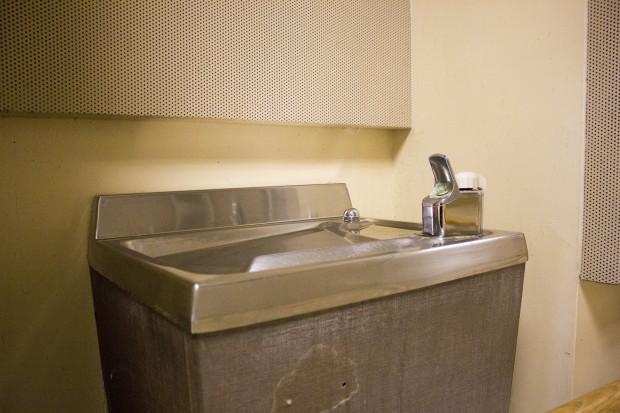Indiana To Begin Testing For Lead In Public School Water

The Indiana Finance Authority plans to test over 700 schools for lead in their water. (Peter Balonon-Rosen/Indiana Public Broadcasting)
State officials plan to investigate the drinking water of over 700 Indiana public schools for lead contamination this summer. Officials will travel the state to collect samples from drinking fountains, kitchen sinks and other fixtures that provide drinking water across school campuses.
Water testing will be led by the environmental arm of the Indiana Finance Authority, which oversees state funds from the United States Environmental Protection Agency.
The IFA recently awarded a $1.63 million grant to the Indiana Geological Survey, a state agency in charge of spreading information about Indiana’s energy, mineral and water resources. The money will be used to aid water testing in schools.
While IFA has planned to investigate school water for months, the timing of their investigation follows low- and high-profile reports of lead contamination in Indiana.
Last year, in East Chicago, Indiana, federal authorities found arsenic and lead levels in soil more than 100 times the legal limit. The poisoned soil sat under an affordable housing development and bordered an elementary school. Gov. Eric Holcomb declared the residential neighborhood a disaster emergency.
In an unrelated case, federal authorities also found lead in East Chicago’s tap water.
In Nov. 2015, tests ordered by a Kokomo, Indiana school district found elevated lead levels in drinking water.
Across the nation, schools and daycares have grappled with how to protect children from contaminated water. According to data from the U.S. Environmental Protection Agency, about 350 schools and day care centers failed lead tests almost 500 times from 2012 through 2015.s
As USA Today reports, some Indiana schools, citing safety concerns, took measures to address lead in water in 2016.
The Indiana School for the Deaf in Indianapolis sampled its water this year “out of an abundance of caution” and found two water fountains with high levels: one initially testing at 130 ppb and the other at 519 ppb. Both were taken out of service with plans to replace them.
As reports of lead contamination in schools becomes increasingly common, the National Association of State Boards of Education plans to develop a national protocol to help schools respond.
State officials plan to compare this summer’s water school measurements against EPA lead action levels, identify contaminated water fixtures over the next 12 months. Schools will be responsible for replacing contaminated fixtures.
A spokesperson for IFA says the sate can offer low-interest loans to schools that need assistance paying for replacements.
Correction: An earlier version of this article said the state would replace contaminated fixtures this fall. Schools will be responsible for paying to replace fixtures. We regret the error.